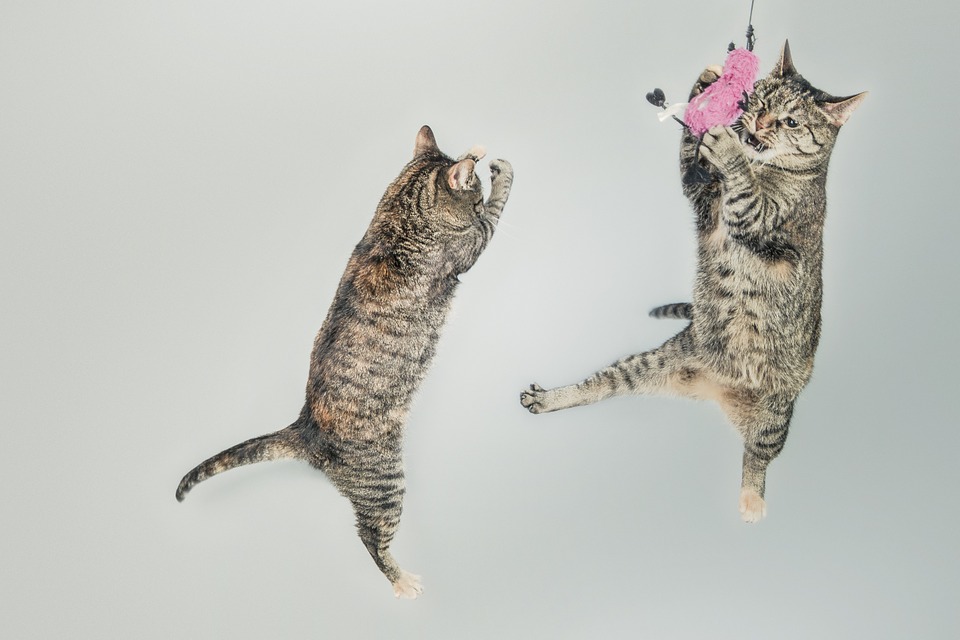Our understanding and management of feline pain, both acute and chronic has changed markedly over the recent decade. One of the conditions that causes chronic pain in our cats is osteoarthritis (OA). It’s a disease that is given a lot of attention in our canine patients but often overlooked in our feline pets.
One study found radiographic evidence of osteoarthritis in 22% of senior cats where other reviews have shown an even higher incident of degenerative joint disease or osteoarthritis in cats. All studies showed that the prevalence of OA increased with age.
Pain, as with many feline ailments, can be a diagnostic challenge, as cats have a fabulous ability to ‘hide’ their ailments. This is often explained as a protective behavior to hide disease and debility. Cat enthusiasts will argue that because cats are an intelligent species, cats reason “if it’s going to hurt, then why do it?” Dogs on the other hand will still try to run, play and chase a ball, giving owners more obvious pain and mobility cues. Therefore when compared to their canine counterparts, recognition of chronic pain in cats requires us to be attuned to subtle behavior changes.
Luckily, as our understanding of chronic pain in cats has increased, so has our ability to treat it. Together with effective and safe feline pain medications now available, we can reduce the negative impact of chronic pain on the quality of life of our feline pets.
Clinical Signs of Feline Osteoarthritis:
The clinical signs of feline osteoarthritis can be subtle and are generally more challenging to identify in cats than dogs. Additionally clinical signs exhibited by cats are different to those shown by dogs and people. Limping and gaits changes are inconsistent and infrequent findings in feline OA. Cats cope with reduced joint function and arthritic pain by making lifestyle and behavioral adaptations. One of the most consistent findings in cats is a change in jumping behaviour.
Clinical Signs or Changes to Look for
- Changes to jumping – most important
-Height of jump
-Willingness to jump
-Frequency of jumping
2. Ability and ease of jumping up to usual places
-Your cat may start to use an intermediary object to get to her usual resting spots (eg. using a bedside table to get onto the bed or a chair to get onto the table)
-Resting in different lower or easier to get to locations
3. Considerate effort and hesitation before jumping.
-You may notice your cat more frequently misjudge the effort required to get up to usual resting places resulting in your cat scrambling up or failing in jumping up to her desired location
-Pulling themselves up onto the couch or bed (ie. they put their feet up and rock of pull themselves up)
4. Hesitation in getting down from heights
-Will ‘pour’ themselves off the bed or from a table
-Looks reluctant to jump down
5. Lose that cat-like agility
6. Less specific clinical signs of OA include: (The less specific clinical signs can also be signs of kidney disease, hypertension, hyperthyroidism or dementia which are also common diseases in our senior pets).
-Increased vocalization
-Changes to coat due to reduced grooming
-Change to temperament such as not wanting to be touched in certain places
-Changes in toileting habits such missing the litter box or going in places not associated with the litter box.
The diagnosis of osteoarthritis will be based on a combination of the owner’s assessment of their cat’s mobility, physical exam and radiographic findings. Many times a therapeutic trial of a pain medication is a good diagnostic tool to determine if a cat is suffering from chronic pain.
Treating and Managing Feline Osteoarthritis
- Lifestyle and Home ChangesEncourage moderate activity to maintain muscle mass
- Lifestyle Aids – such as steps or ramps
- Weight reduction – to reduce the stress on the painful joints
- Chondroprotectants – are neutraceuticals that can help reduce arthritic pain and improve long term joint health. When used in conjunction with pain medication they often allow a lower dose of pain medication to be used.omega 3 fatty acids
- glucosamine/chondroitin
- Eg. Cartrophen (pentosan polysulphate) ,
- Analgesics
- The best one for your cat will be determined on the current health of your cat and other concurrent conditions it may have. You may even find that your cat is prescribed a combination of 2 or 3 of these medications to take advantage of the synergism of these medications to control pain.
- There are several categories of analgesics that are available for cats; NSAIDs, opiates and gabapentin.
- Complimentary Alternatives: Laser therapy and Medical Acupuncture. At Amherst Veterinary Hospital both are offered; Dr. Natasha Milokovic is certified in veterinary acupuncture.
Case Study
Meow Meow is a 14 year old indoor cat. His previous history is unknown because he was adopted as a senior stray cat. As the owner has only adopted him 1 year prior there was not a good basis of comparison for any decline in his mobility. She had no reason to think there was a problem as there was no obvious limping noted. Radiographs of Meow Meow’s knees were taken recently as he started limping suddenly on his right hind limb (likely from landing funny while jumping off a table). Both of Meow Meow’s knees show marked osteoarthritic changes. He is currently being managed with Cartrophen injections and oral pain medication.
Osteoarthritis in our senior cats is a prevalent condition effecting conservatively 22% of our senior cats. The clinical signs are often subtle and often times dismissed as signs of aging. There are simple and effective strategies that can help your cat live more comfortably with osteoarthritis. If you suspect osteoarthritis in your cat or your cat is showing signs of slowing down, please discuss this with us at Amherst Veterinary Hospital.
Dr. Loretta Yuen D.V.M




